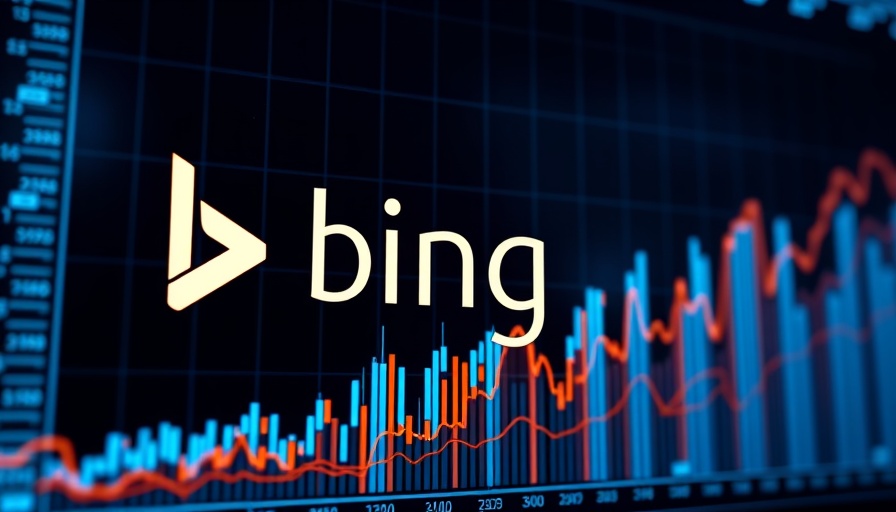
Microsoft Bing's Advertising Revenue Soars with AI Innovation
In a striking demonstration of resilience and growth, Microsoft has reported a remarkable 21% increase in its Bing advertising revenue for the third quarter of 2025. This two-year consecutive surge parallels an industry landscape where brands continually reassess their marketing strategies to capture the increasingly digital-savvy consumer base. Microsoft’s commitment to capitalizing on AI-driven insights in advertising has proven pivotal during this journey.
Financial Highlights: Strong Performance Amidst Competition
The reported earnings further unraveled a commendable picture of Microsoft's overall financial health. The total revenue for the quarter stood at an impressive $70.1 billion, marking a solid 13% increase year-over-year. Operating income reached $32 billion, while their net income soared to $25.8 billion, reflecting Microsoft’s strategic investments in cloud and AI capabilities. These statistics reveal not just growth but an efficient scaling of resources as Microsoft leads the charge in a competitive digital advertising market.
AI’s Role in Accelerating Advertising Success
At the heart of this remarkable success story lies Microsoft’s integration of artificial intelligence within its advertising ecosystem. Satya Nadella, Microsoft’s chair and CEO, noted, "Cloud and AI are the essential inputs for every business to expand output, reduce costs, and accelerate growth." This innovative approach to leveraging AI technologies is resonating strongly with businesses of all sizes, especially small enterprises hoping to optimize their marketing spends efficiently.
The Small Business Advantage: AI as a Marketing Ally
With these emerging trends, small business owners should take note. AI technologies are no longer the exclusive domain of industry giants; they are increasingly accessible to small and mid-sized businesses. Tools powered by AI can analyze consumer behavior at a granular level, tailoring advertising strategies that drive conversions, reduce costs, and enhance customer relationships. The potential for dramatically improved marketing efficacy stands out starkly against the backdrop of traditional methods.
Future Trends: What Lies Ahead for Digital Advertising?
As we glance toward the future, the implications of AI on the advertising landscape suggest a shift towards hyper-personalization. Advertisements tailored to individual preferences are seen as not just beneficial but expected by consumers. Forbes reported recently on the rising importance of personalized marketing, stating, "78% of consumers expect personalized interactions from brands." For small business owners and marketers, understanding this shift presents an opportunity to engage more deeply with their audiences.
The Actionable Insights for Marketers and Agencies
Agency leaders should consider aligning their marketing strategies with the evolving digital landscape. Prioritize investments in AI tools that can draw actionable insights from consumer data, enabling campaigns that resonate strongly with their target demographics. Furthermore, fostering an agile marketing environment allows for swift adjustments based on real-time data, ultimately enhancing ROI.
Leveraging Bing Tools for Enhanced Visibility
As Bing enhances its features and continues to emphasize AI capabilities in its advertising portfolio, marketers and small business owners would do well to explore the platforms’ tools designed for visibility and engagement. With features that provide insights into audience behavior and preferences, businesses can craft ads that resonate and convert, tapping into Bing's growing audience.
Conclusion: Embrace the AI Future
For small business owners and marketers, staying abreast of Microsoft Bing’s advertising revenue upsurge signifies a crucial opportunity to innovate within their strategies. The convergence of AI and advertising is no longer speculative; it’s an emerging standard ready to transform customer engagement. To effectively navigate this shift, it’s imperative to leverage AI-driven tools to refine marketing strategies and maximize advertising efficacy.
Call to Action: Don’t let the evolving landscape pass you by. Embrace AI-driven marketing strategies today to transform your advertising approach and enhance customer relationships. Start exploring the tools available through Bing and other platforms to propel your business forward.
 Add Row
Add Row  Add
Add 




Write A Comment